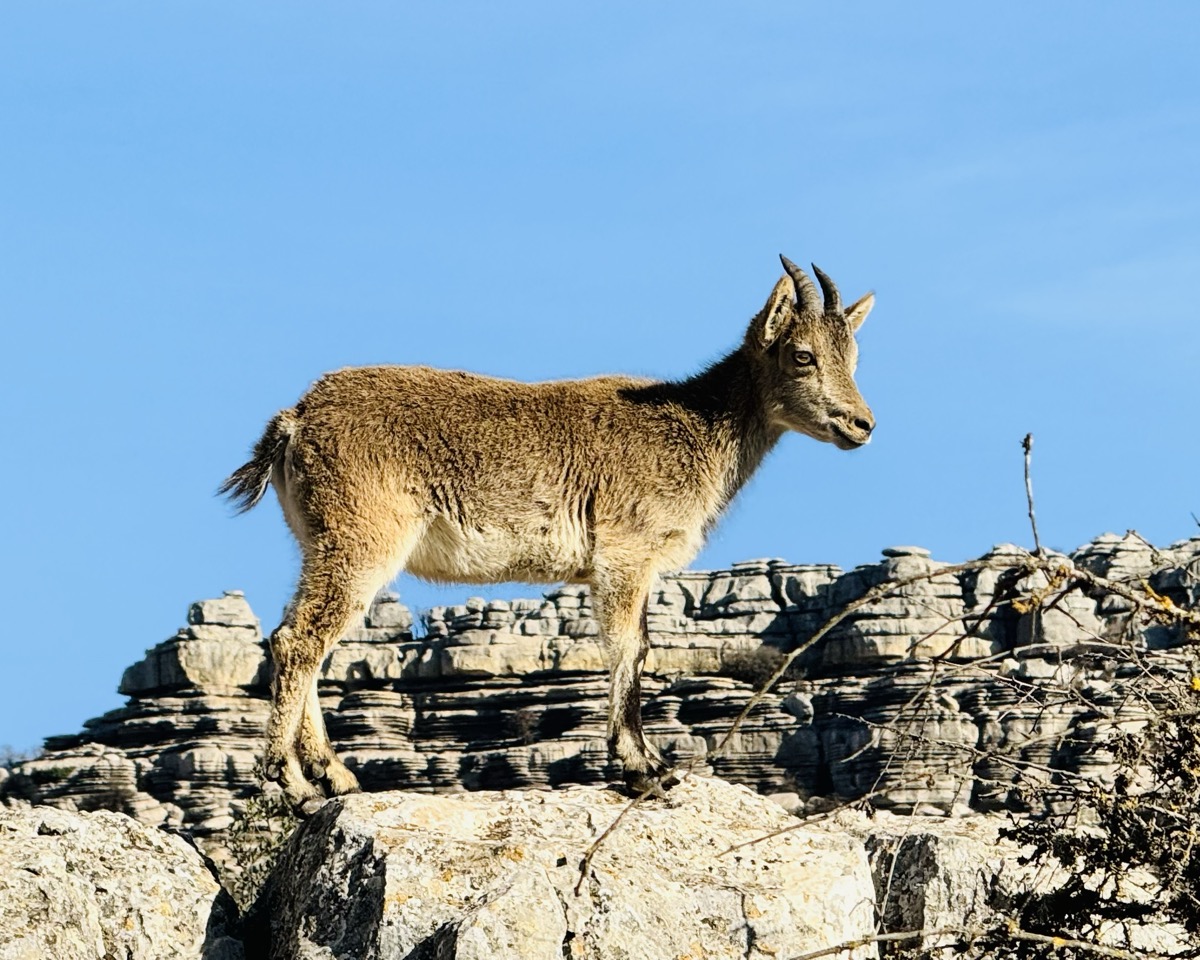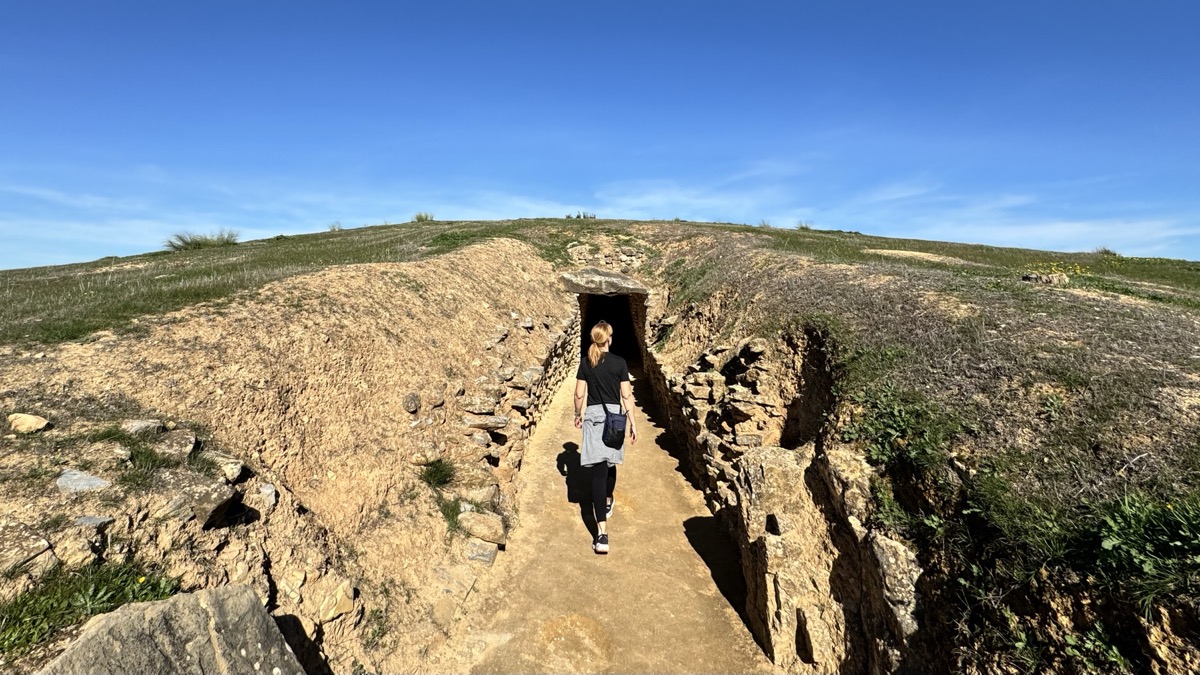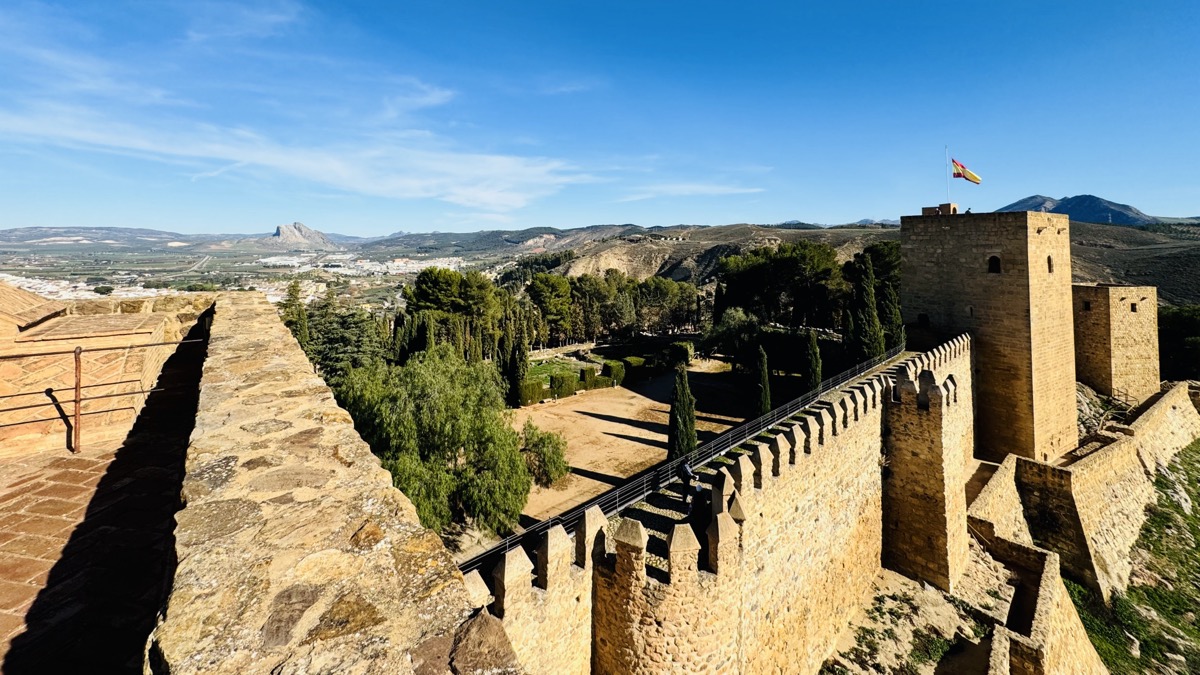El Torcal and Antequera
On our last day in Málaga we rented a car and explored the hills north of town.
 Spanish ibex in El Torcal
Spanish ibex in El Torcal
Our first stop was El Torcal, a natural park with beautiful karst limestone blobby rocks and some very nice hiking. The location is very visible from Málaga, and the drive up was breathtaking. Gorges, farmland, pastures, and then a steep switchback climb take you up to the ridge-line where there’s maybe 10 km of of the rocks, perhaps 1km wide. The visitor center is tucked into the middle of the rocks, and with well-marked trail signs we were quickly on our way to hike the yellow route.
Right away we came across a small herd of Spanish ibex, who cared not for our presence and gave us plenty of opportunities for photos.
 Lunch break in El Torcal
Lunch break in El Torcal
It must have rained a bit the night before, because our descents into the riparian valleys nestled in the rocks came with plenty of water and mud. It wasn’t too hard to dodge these, and with the next climb we’d be back on dry land. The trail wasn’t long or stop, but the walking was challenging as we navigated the irregular rocks at times slick from the water and mud.
I kept thinking that the trail would reach the southern ridge wall and that we’d have a nice spot to look out over the valley and into Málaga and the sea. Our lunch spot ended up being above a meadow almost as we returned to the visitor center. Fortunately right at the center there’s a short trail that takes you to the precipice with a nice view reward.
 Julie exploring a dolmen
Julie exploring a dolmen
Our next stop was the dolmens of Antequera where we visited three different dolmens (passage tombs), two of them 5000-6000 years old. The primary site near town is extremely well appointed with a beautiful visitor center situated in a grassy meadow with wildflowers. We enjoyed the informational exhibit inside that helped make the geographical arrangement more clear. One of the dolmens has the entry pointed (likely) to a solstice line, the other pointed at a prominent rock promontory, and the other pointed back at El Torcal. Julie and I both felt that the Tholos del el Romeral, which isn’t situated on this main property but is outside of town a bit more, was the most interesting to visit. It had two distinct chambers with large beehive tops.
 View from the Alcazaba in Antequera
View from the Alcazaba in Antequera
Antequera has a castle so we had to visit and climb upon the ramparts. This was yet another example of a fortress built in the twilight of the Muslim empire in Spain. Not much is preserved, but the payoff was certainly climbing the towers and getting views of the town and surrounding features.




